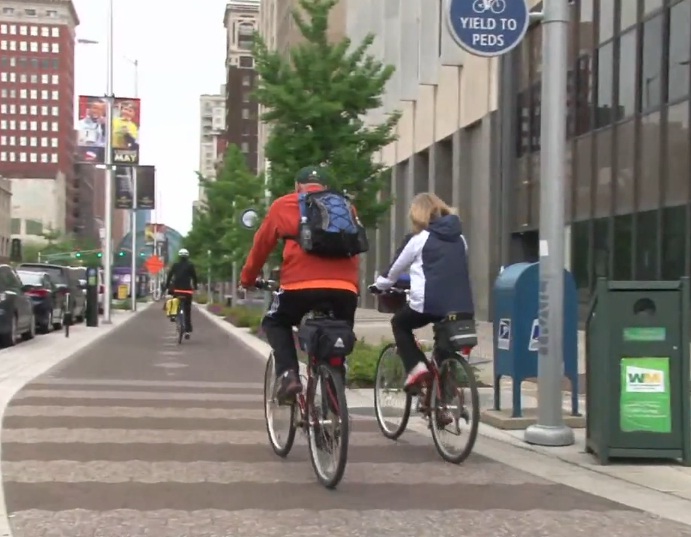Unlike Cincinnati, Indianapolis has wide streets. The streets are so wide that there is room to do some neat things within the right-of-way with regards to non-automobile forms of transportation.
As a result, Indianapolis Mayor Greg Ballard (R) made it a priority of his administration to not only support the eight-mile Indianapolis Cultural Trail, but to create a city-wide bicycle network that he hopes will have 200 miles by 2015.
It’s a steep change for a city that had virtually no on-street bike lanes in 2007, and only 70 to 75 miles of on-street bike lanes now.
“It feels different when you’re riding a bike, because of how it’s been built and what’s underneath it,” Mayor Ballard told Clarence Eckerson Jr. from Streetfilms. “It’s the part about connecting up everything that’s really made a dramatic impact and is getting the international attention.”
The $63 million project was largely funded through private contributions, and has now created a physically separated pedestrian and bicycle facility that connects many of the city’s significant attractions and center city neighborhoods.
As Cincinnati works on developing a bicycle network of its own, complete with physically separated facilities like the Cultural Trail, what do you think the Queen City should do the same or do differently?
